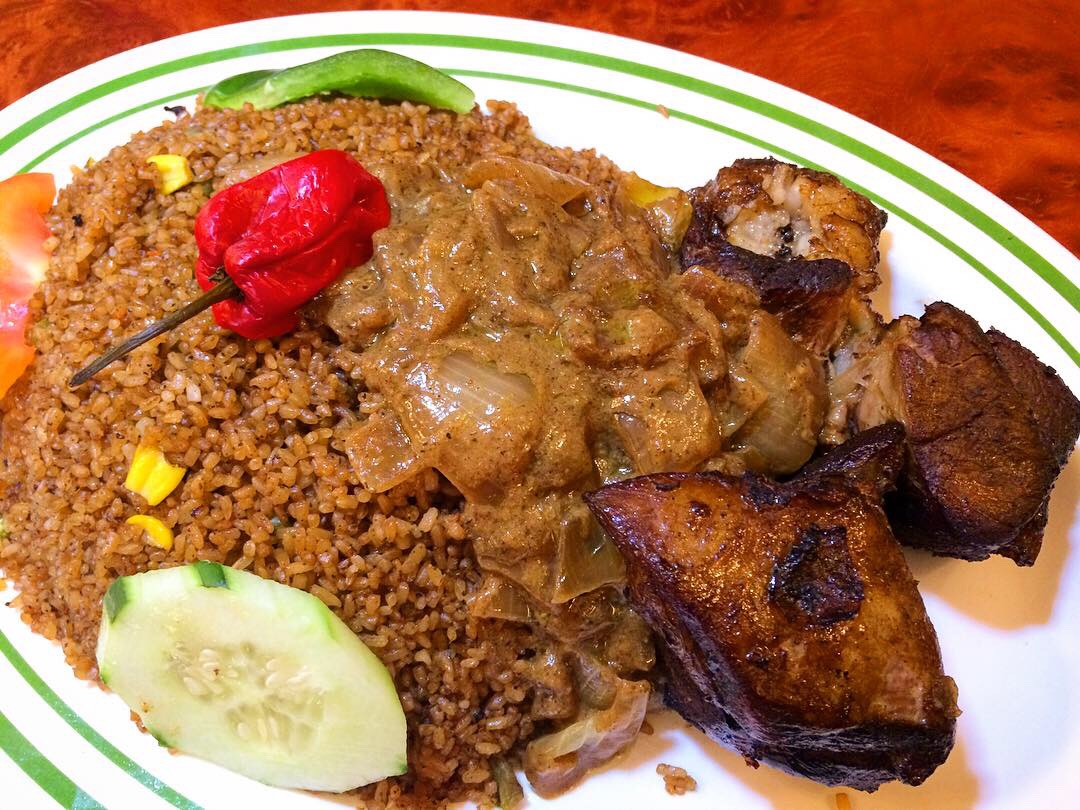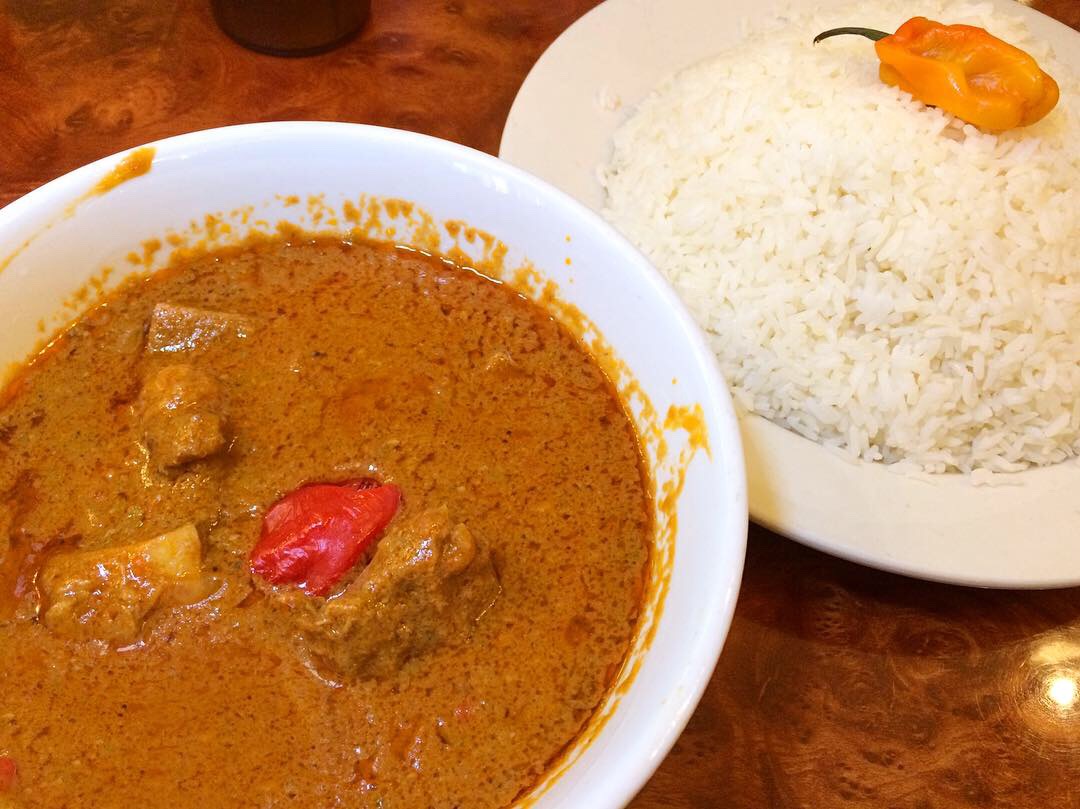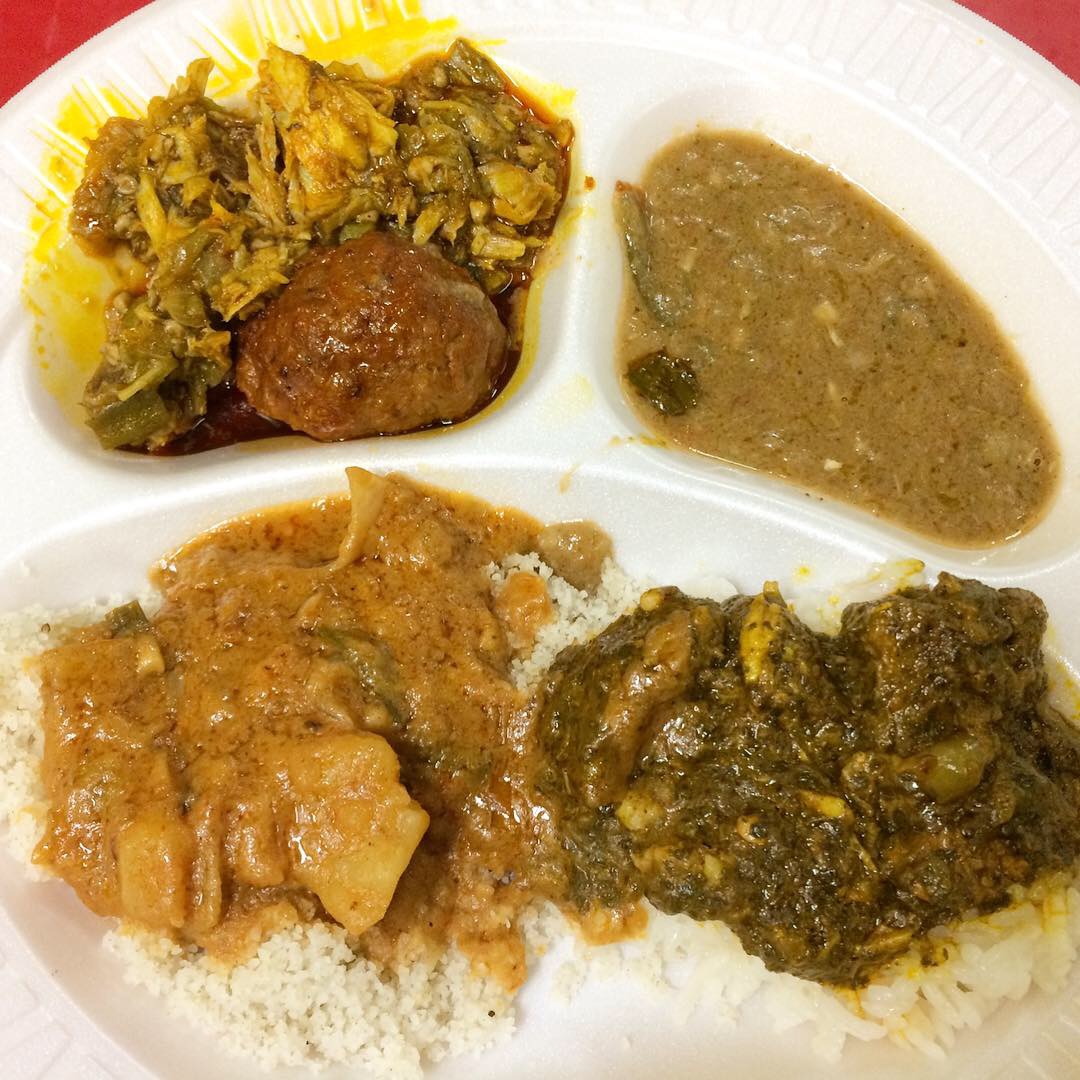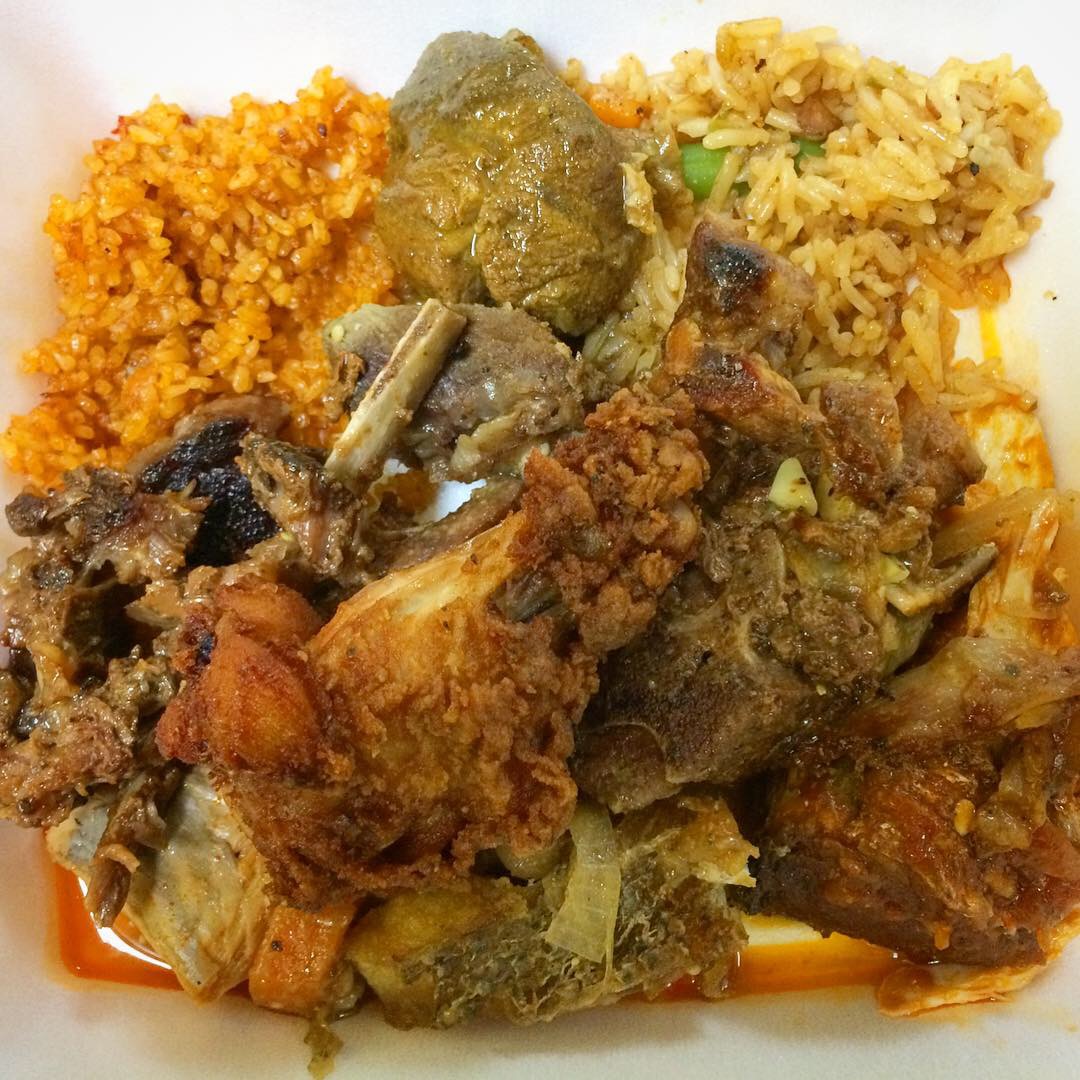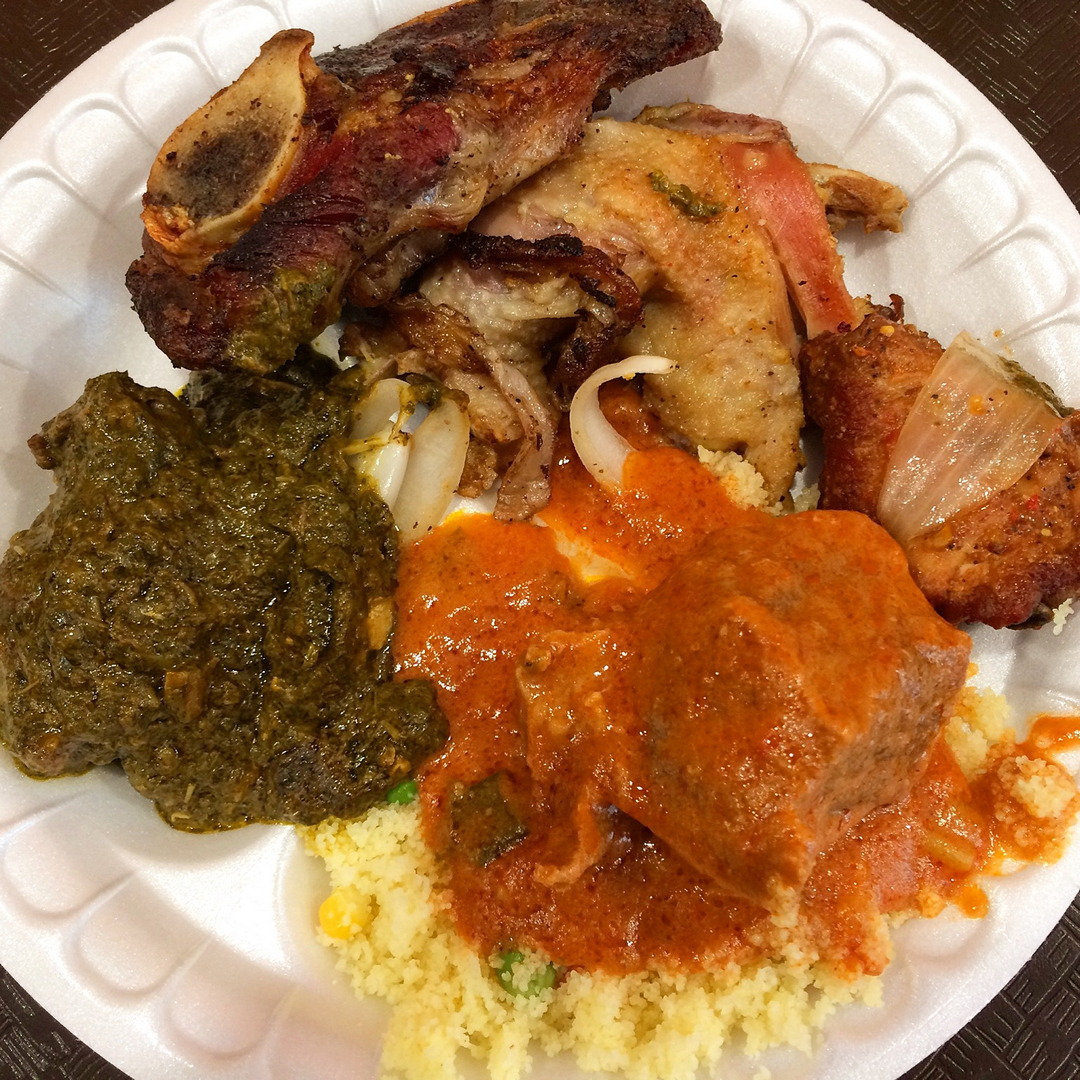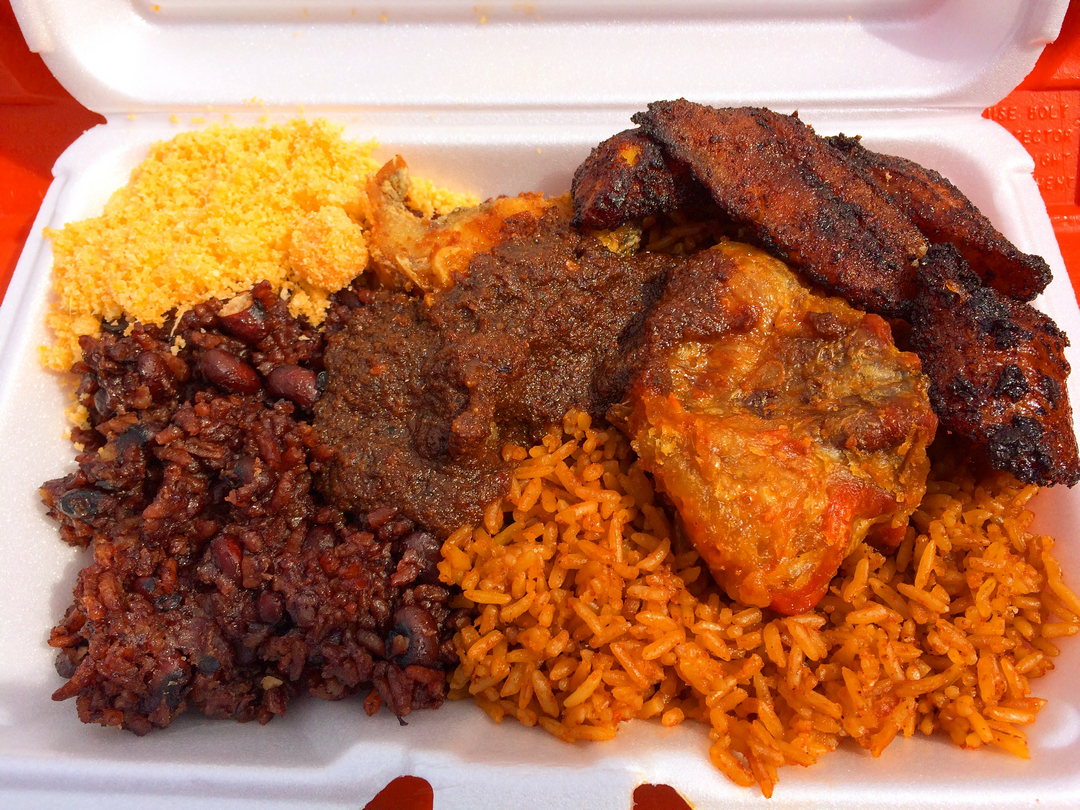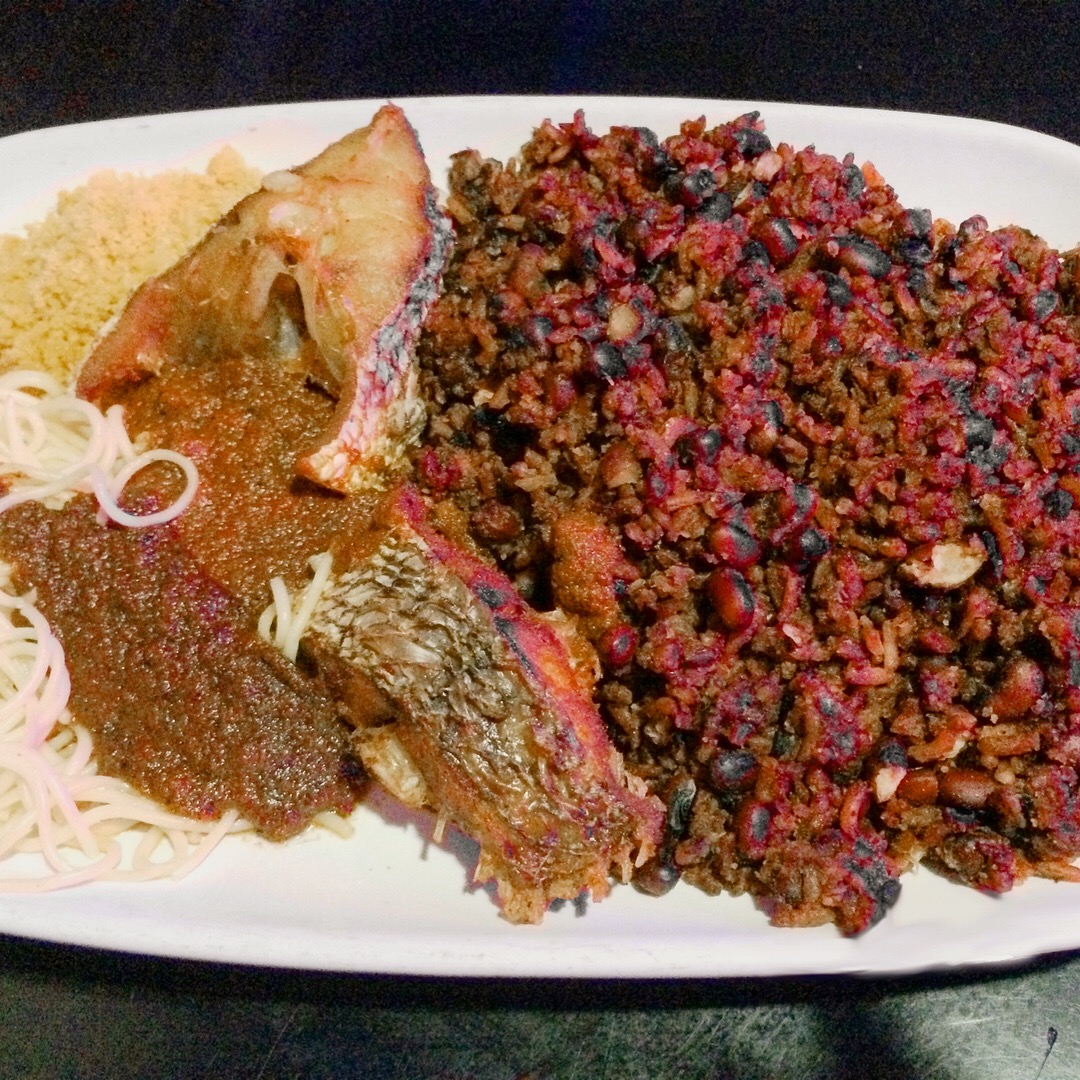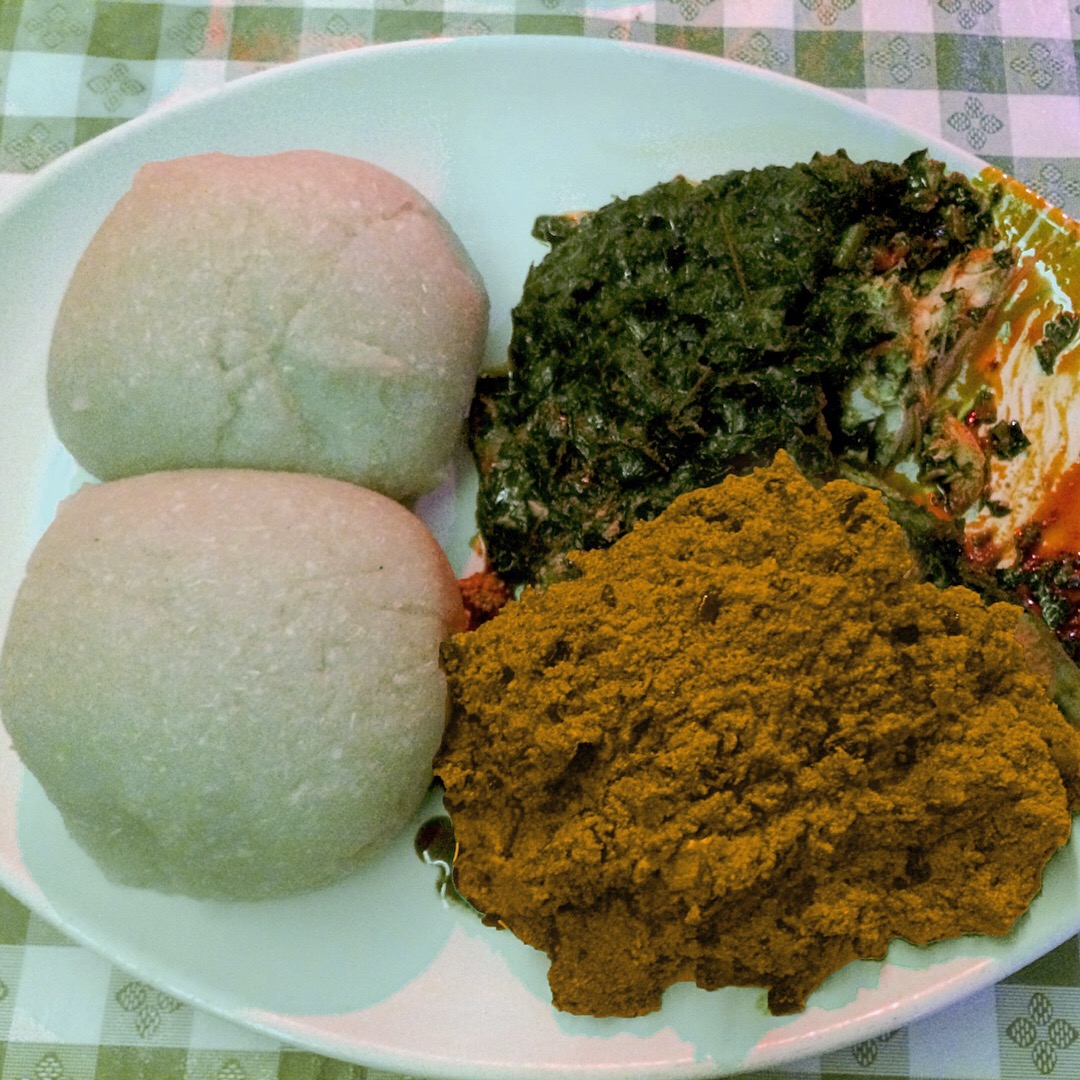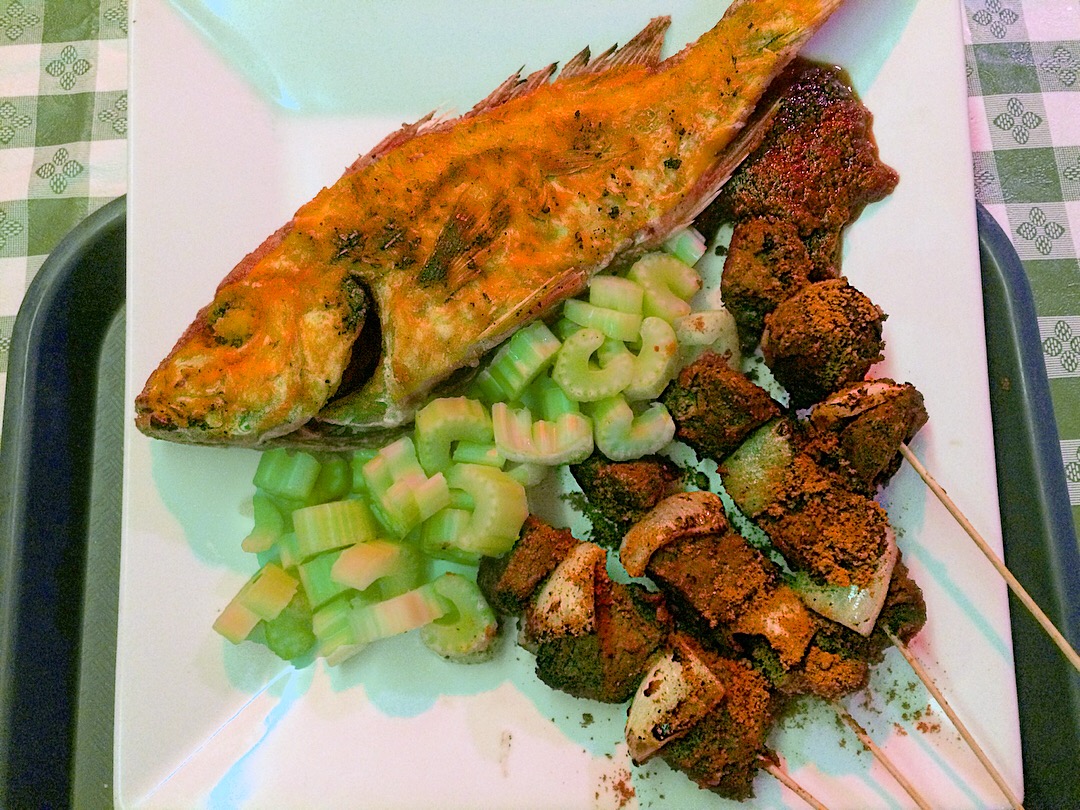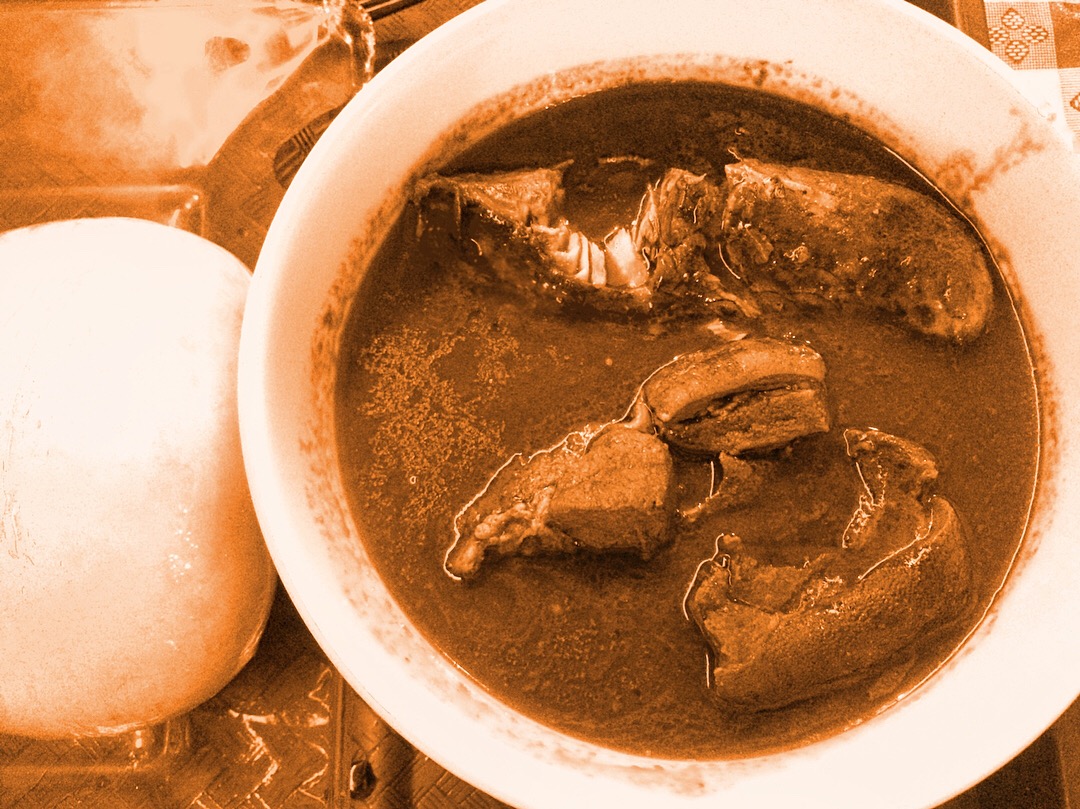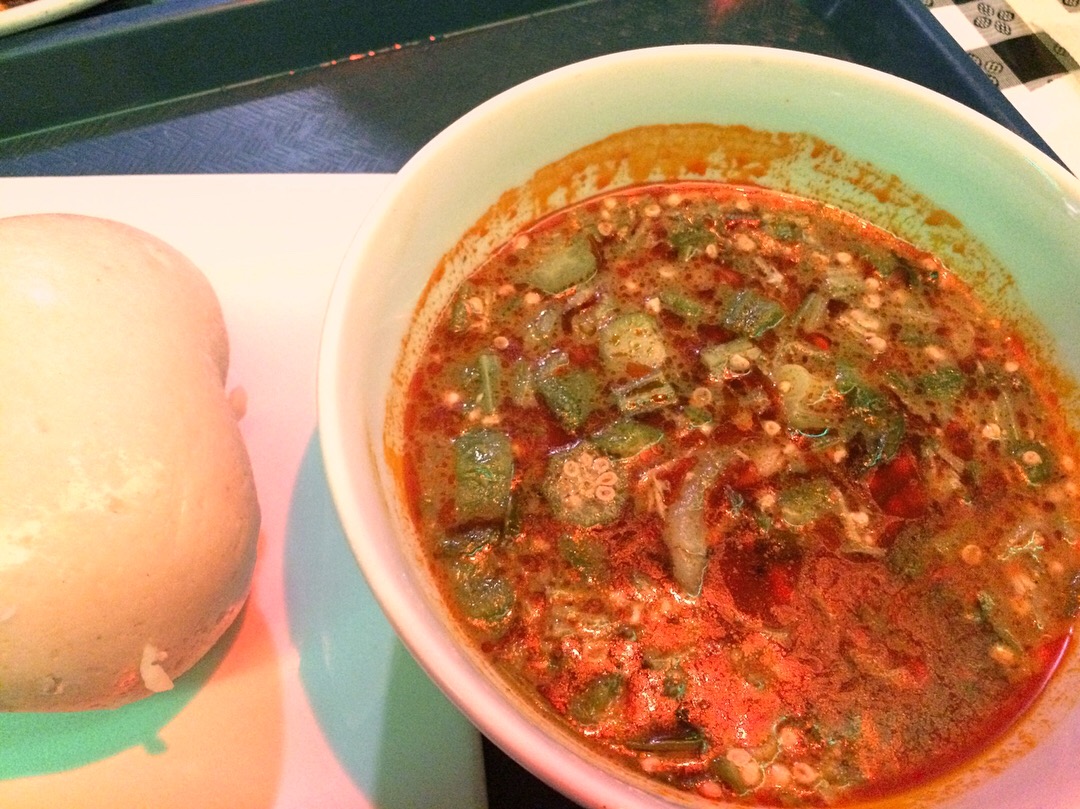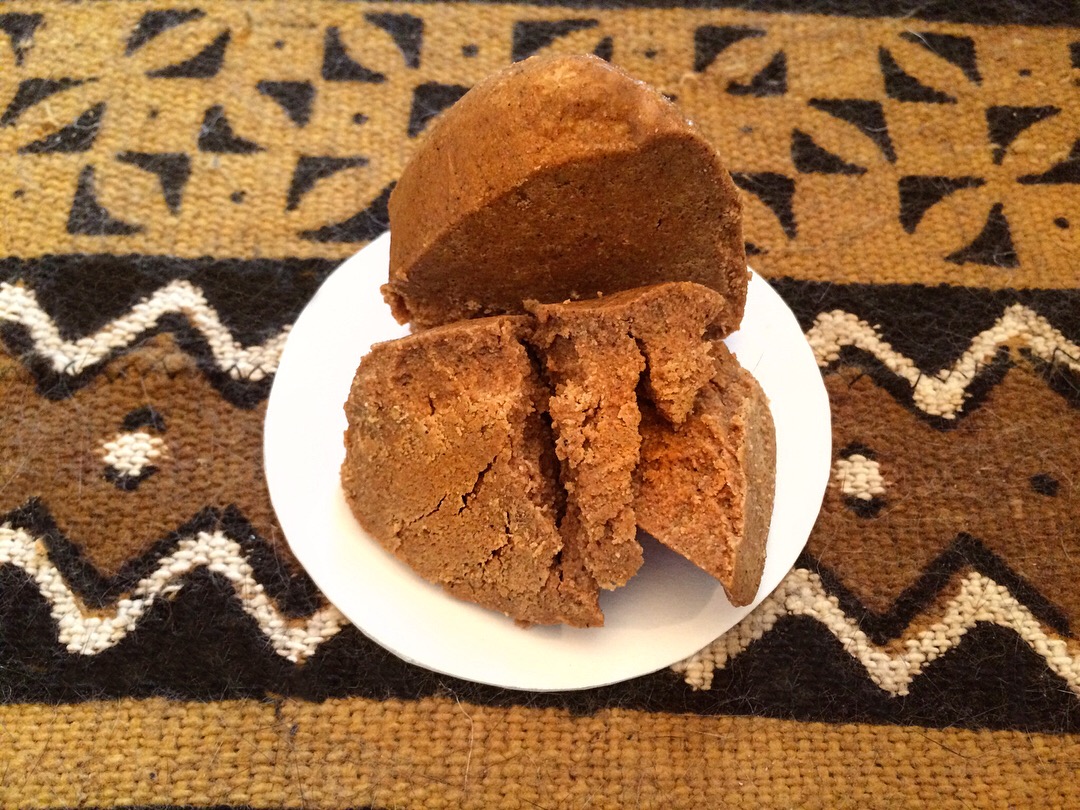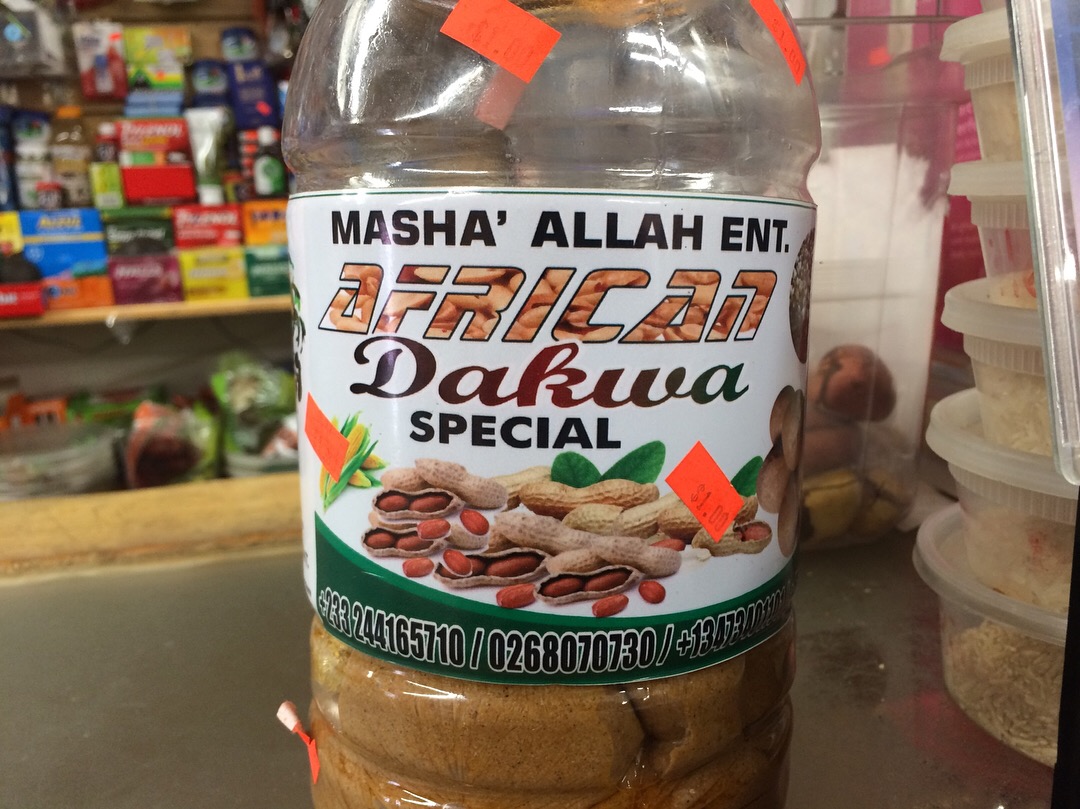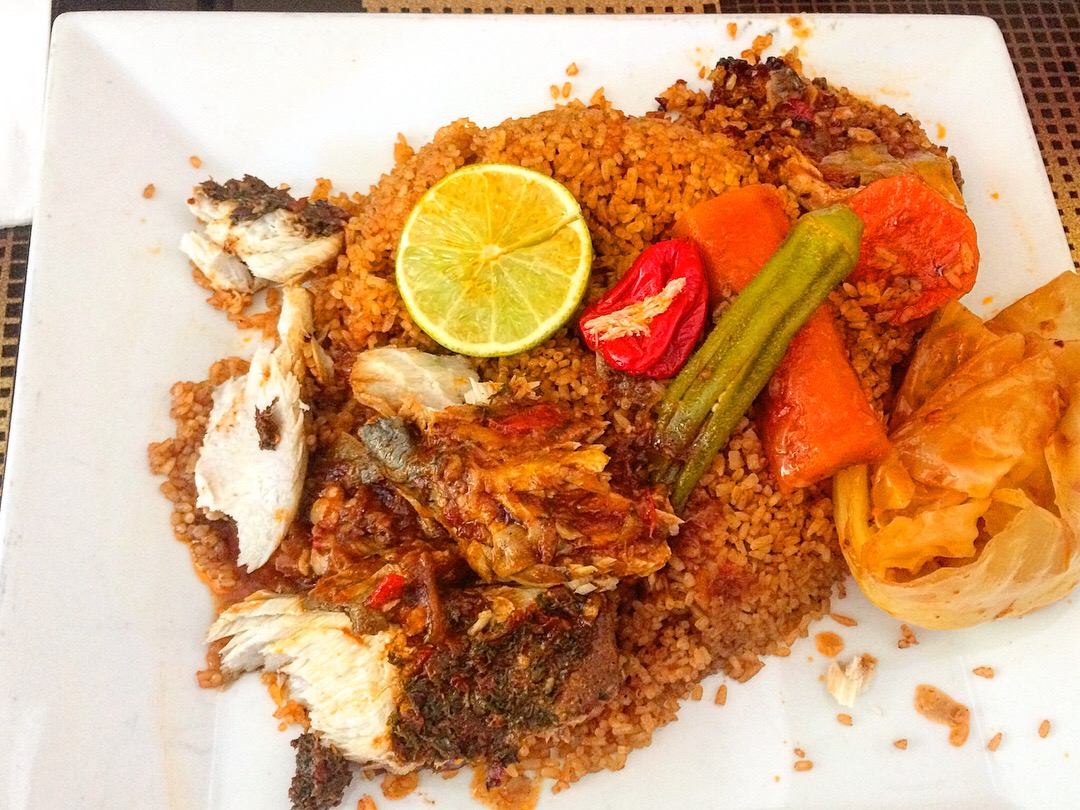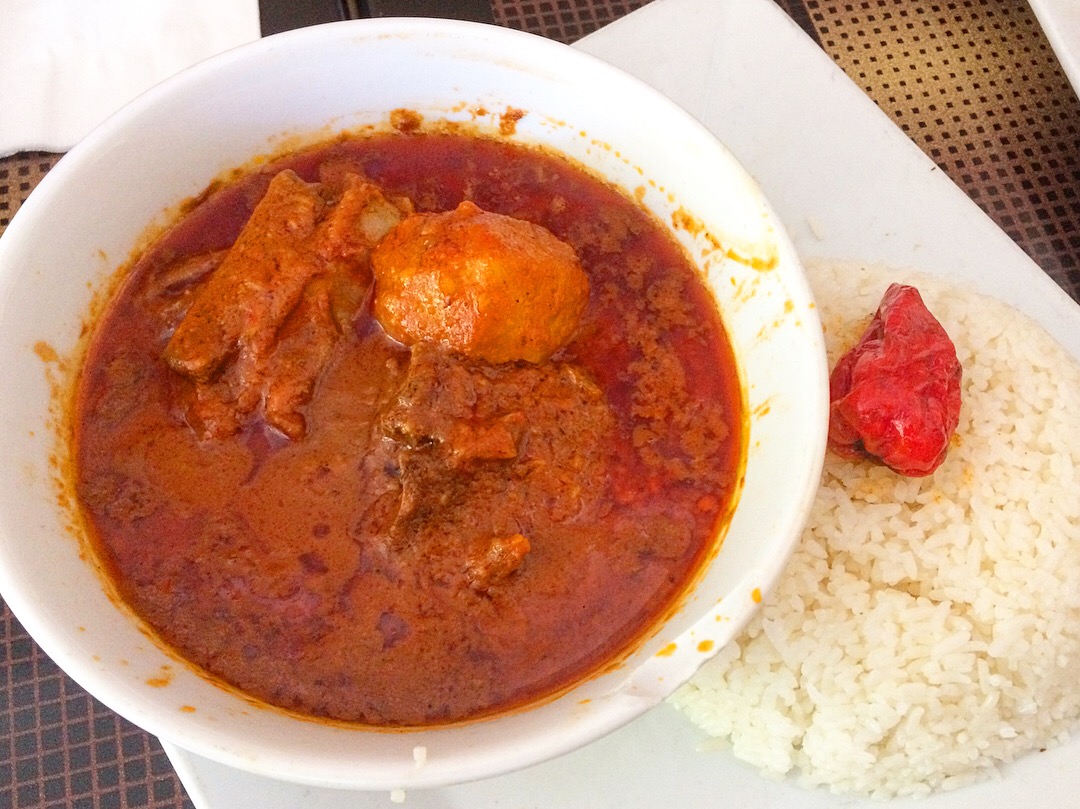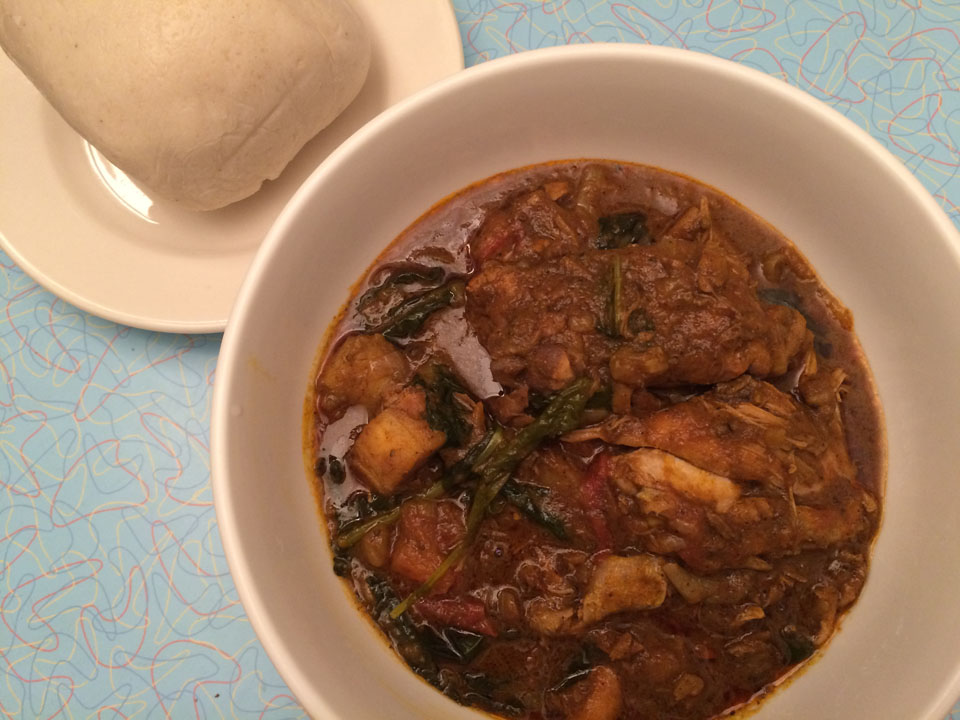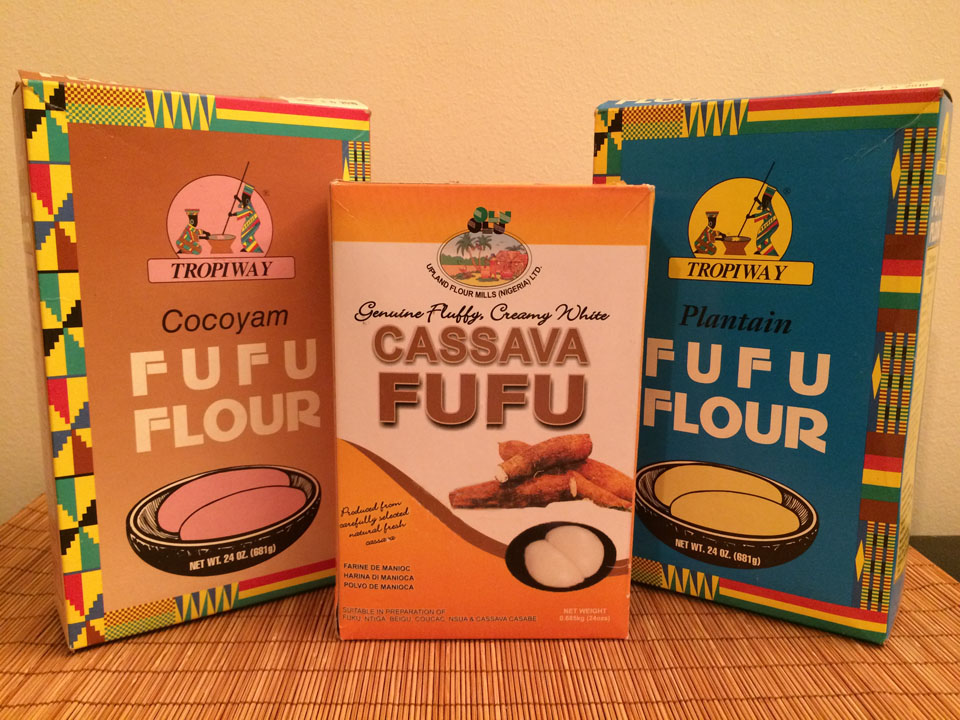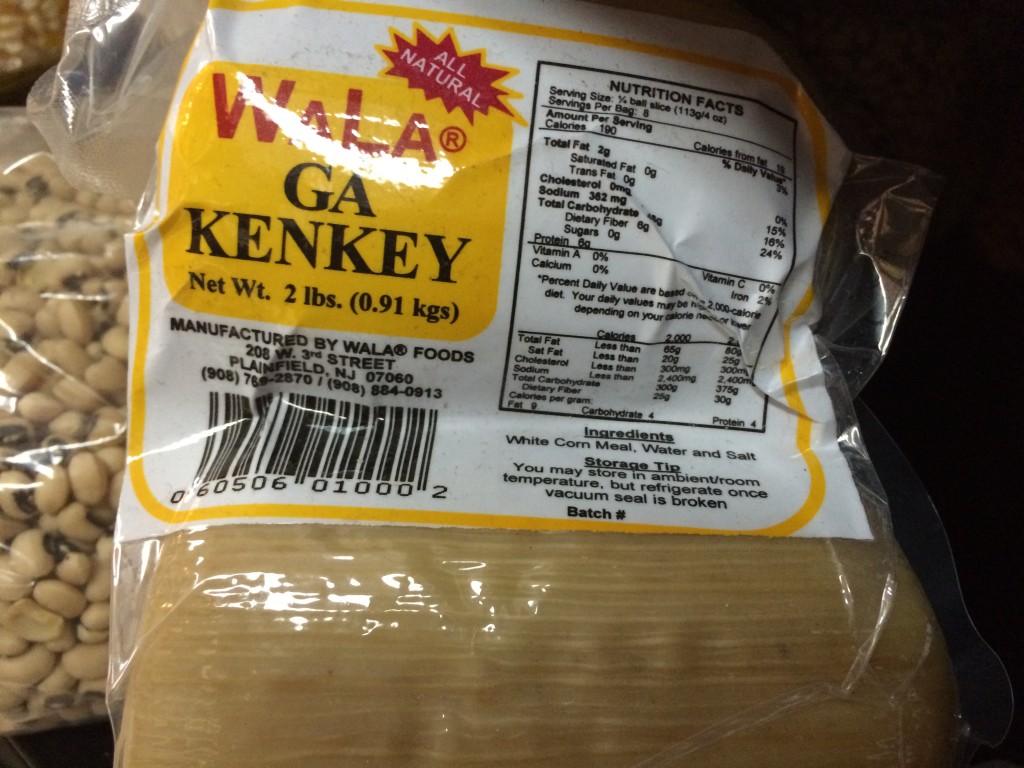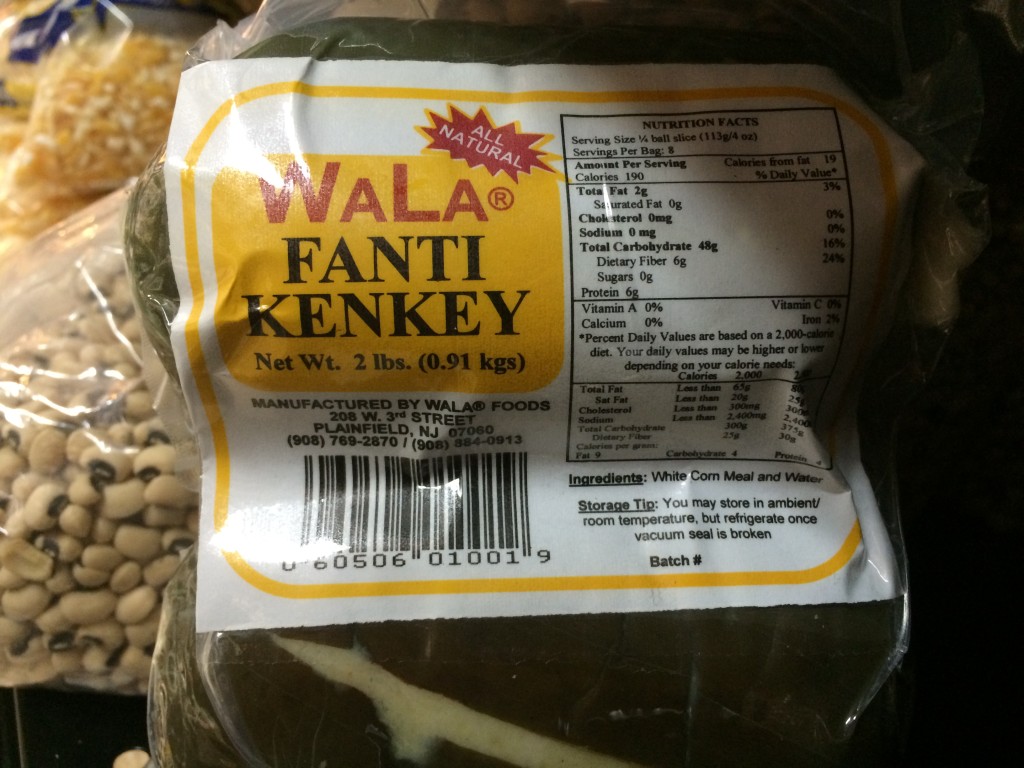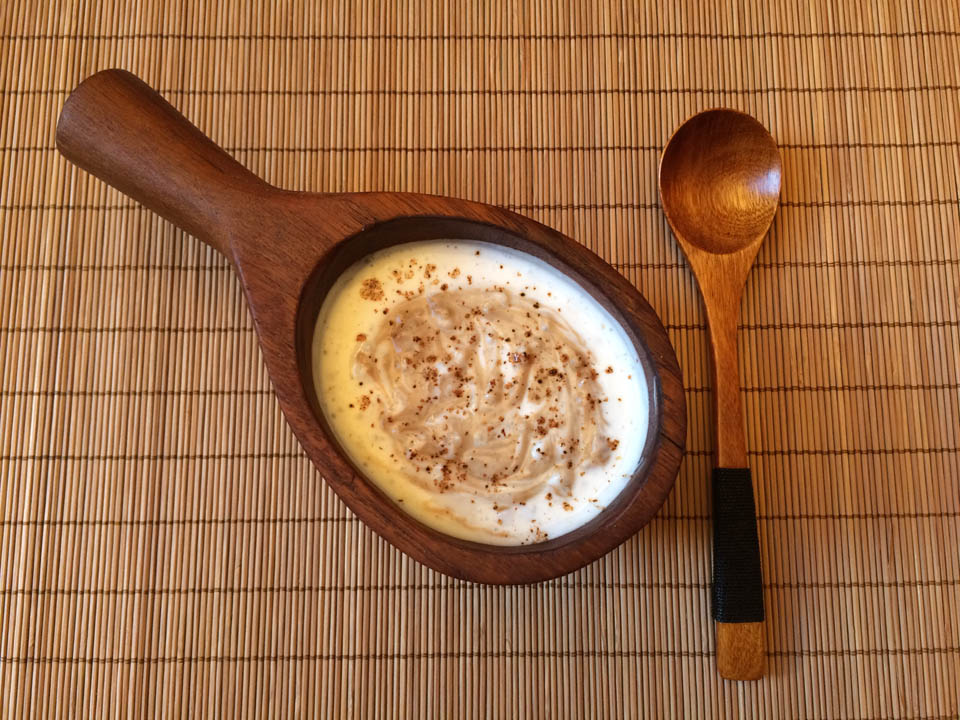When I write about restaurants on Instagram, they’re usually brief takes accompanied by a photo or two. (You can see my feed right here on ethnojunkie.com by selecting the “Instagram” category from my home page – no signup required.) But folks sometimes ask for more extensive reviews and photos, so in response, here’s a comprehensive report on one of my favorites.
Ever had Ghanaian cuisine? Want to try some of the best you’ll ever have? Then look no further than Accra Restaurant, 2065 Adam Clayton Powell Jr Blvd, where a group of us converged on a recent jaunt to Harlem. Accra is named for Ghana’s capital and although Senegalese food is a bit easier to find in this neighborhood, we had set out for a Ghanaian feast and this steamtable spot provided just what we were after. Thanks to their excellent food and warm hospitality, it was an extraordinary experience. The story of our first visit is the stuff of which fantasies are made and perhaps I’ll post the details of it soon, but in the meantime, have a look at some of the extraordinary dishes we tried.
(Click on any image to view it in high resolution.)
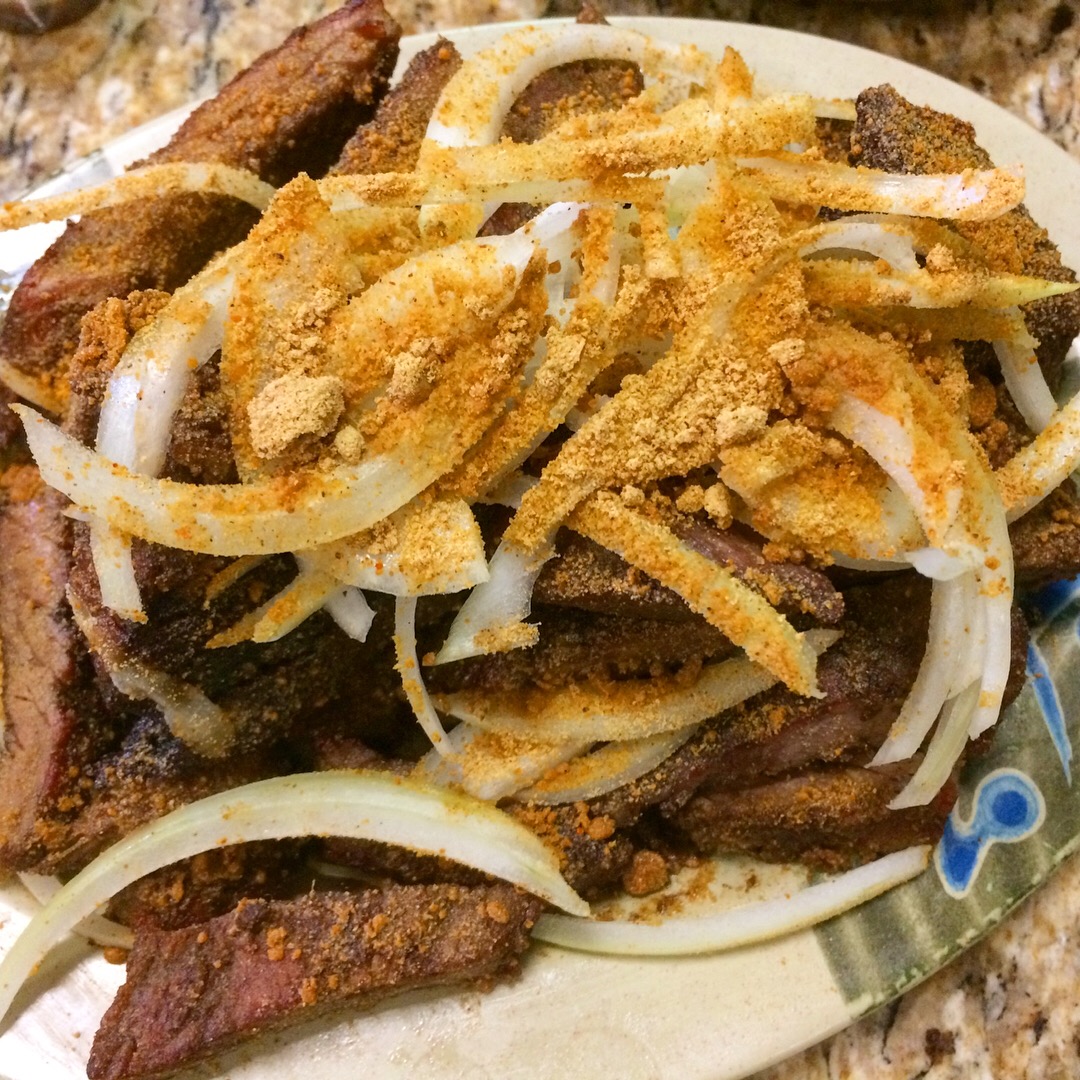 Suya
Suya
Skewered spicy grilled beef, served in slices, best known as a delicious street food.
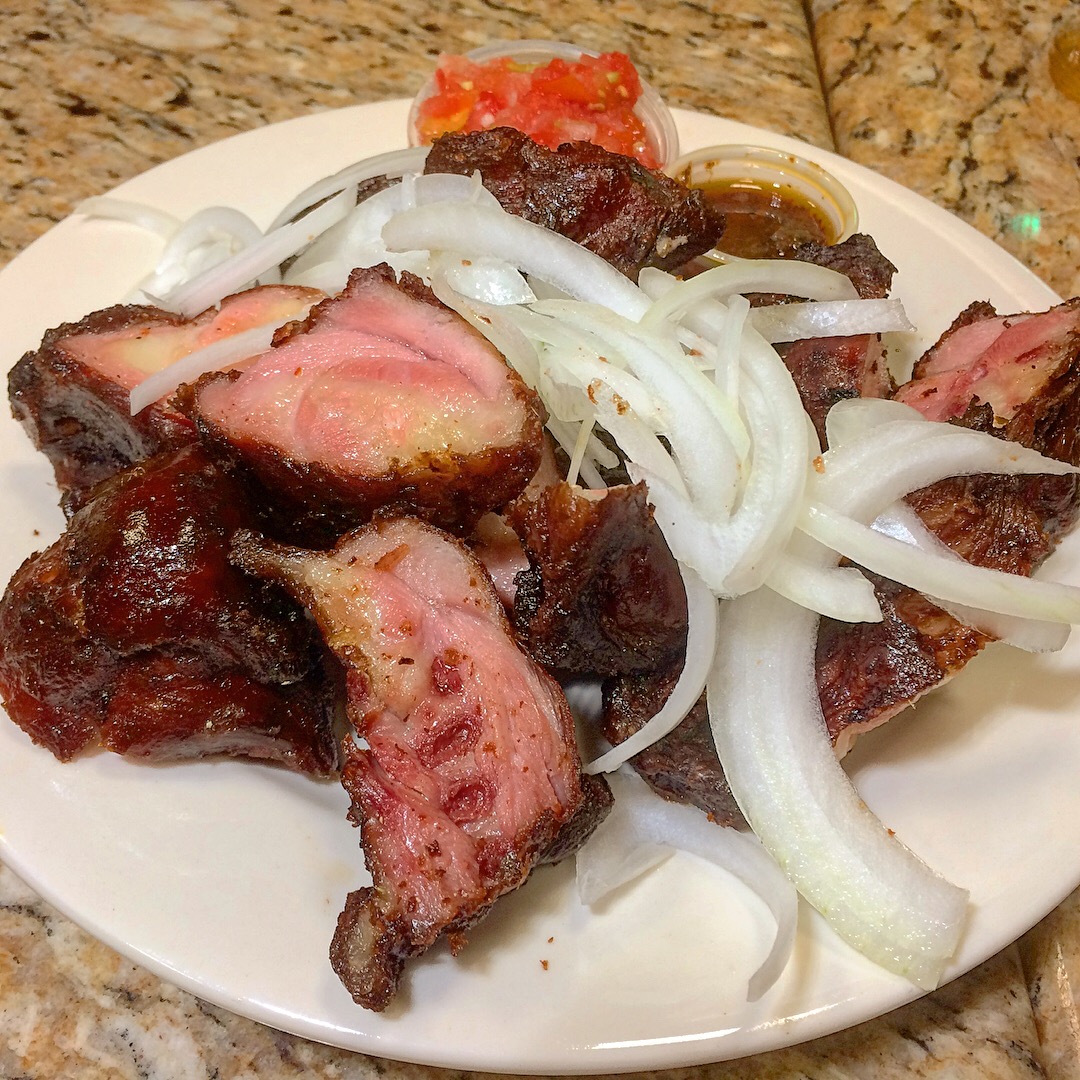 Fried Turkey Tail
Fried Turkey Tail
This is Halal cuisine, so don’t expect any pork on your fork, but you’ll forget about ribs when you try these. Known to some as the pope’s nose, I call it the part that goes over the fence last. Smoky, juicy, delicious and often overlooked by those who don’t know better! 😉
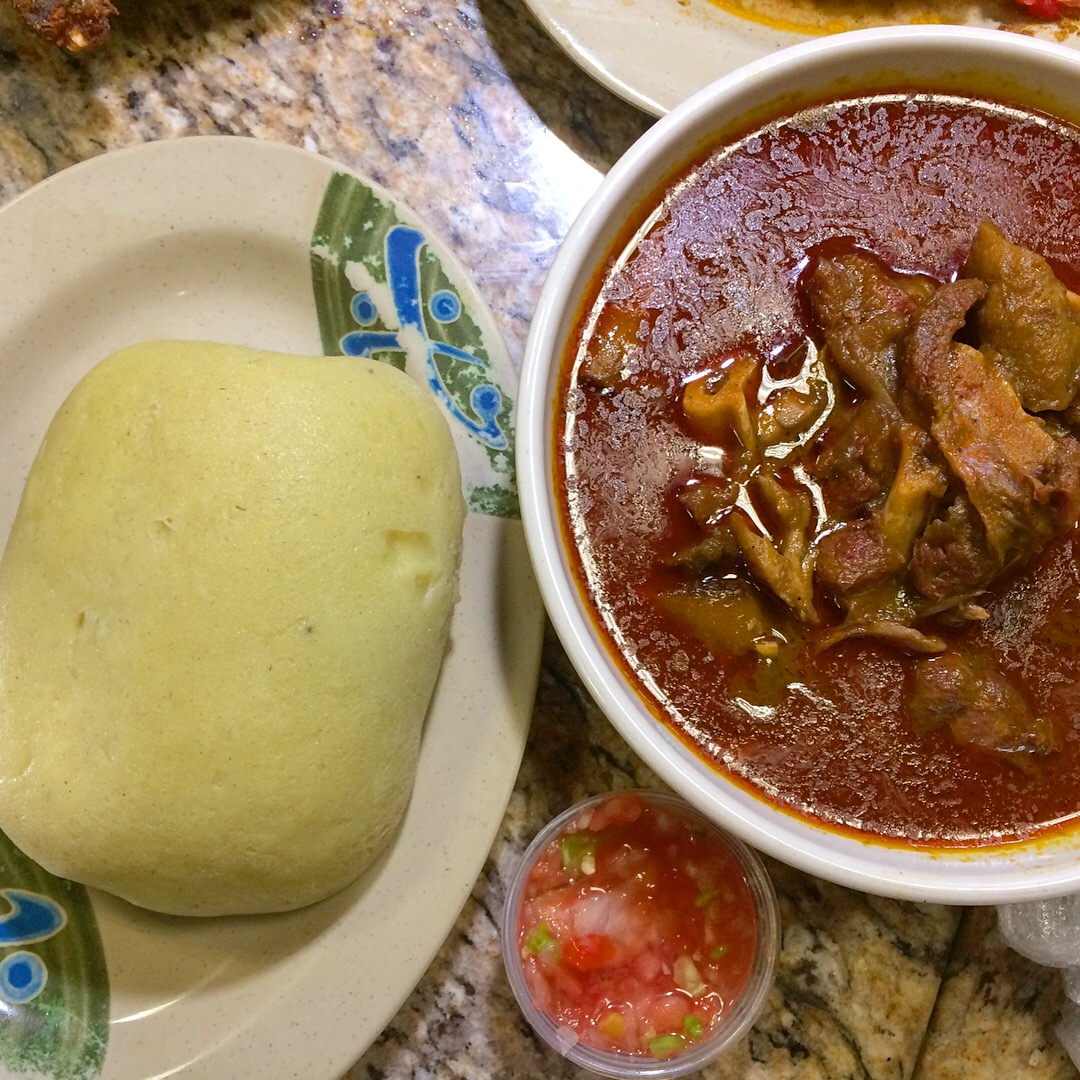 Plantain Fufu and Palmnut Soup
Plantain Fufu and Palmnut Soup
Pinch off a hunk of the starch with your fingers, dip it in the delectable soup and enjoy. One of my favorite starch/soup combinations, but they’re all great here.
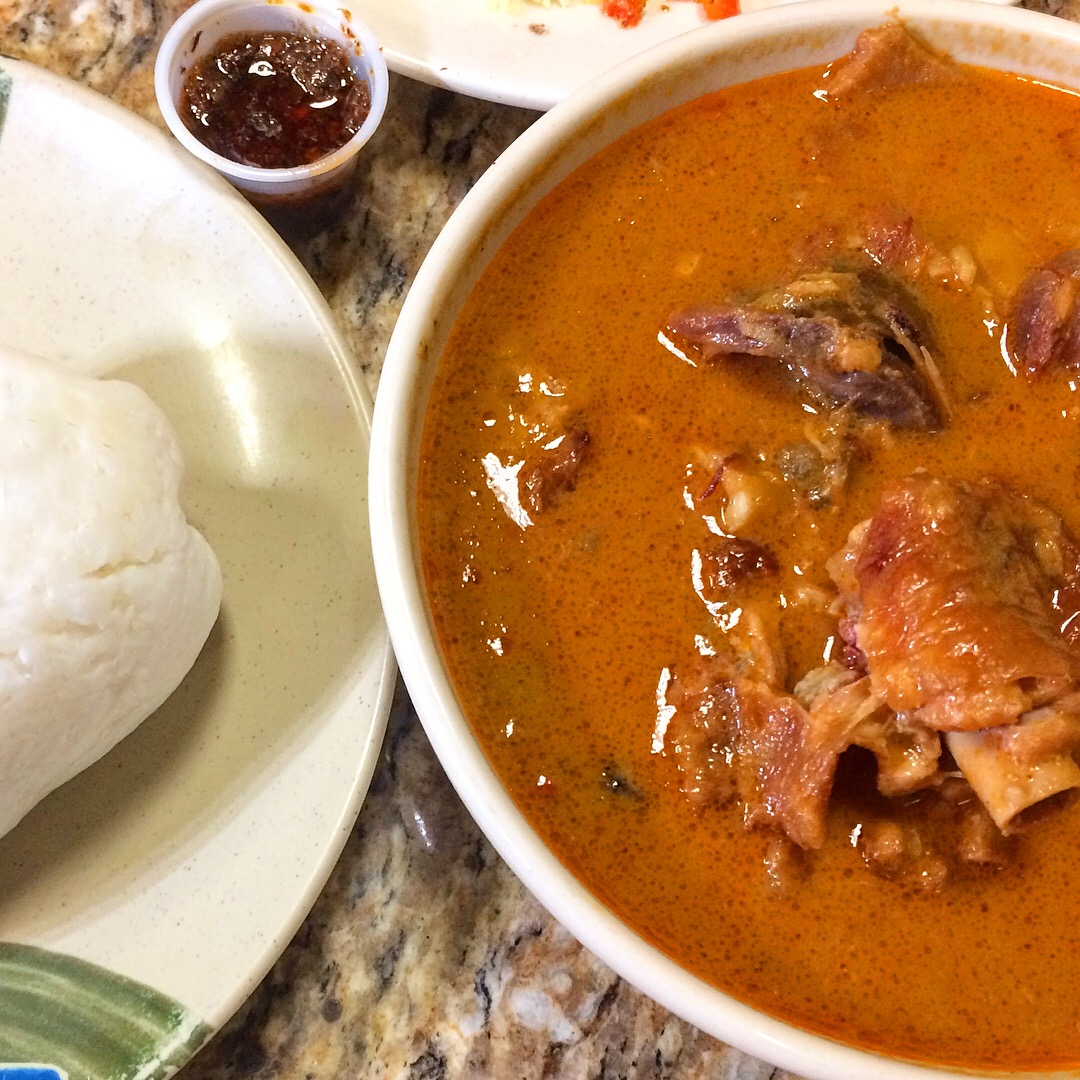 Emo-Tuwoo and Peanut Soup with Goat
Emo-Tuwoo and Peanut Soup with Goat
I’ve seen many spellings for this starch including emotuo and omotuo; orthography aside, it’s a compressed rice ball that goes perfectly with peanut soup. Sounds good, right? Tasted even better!
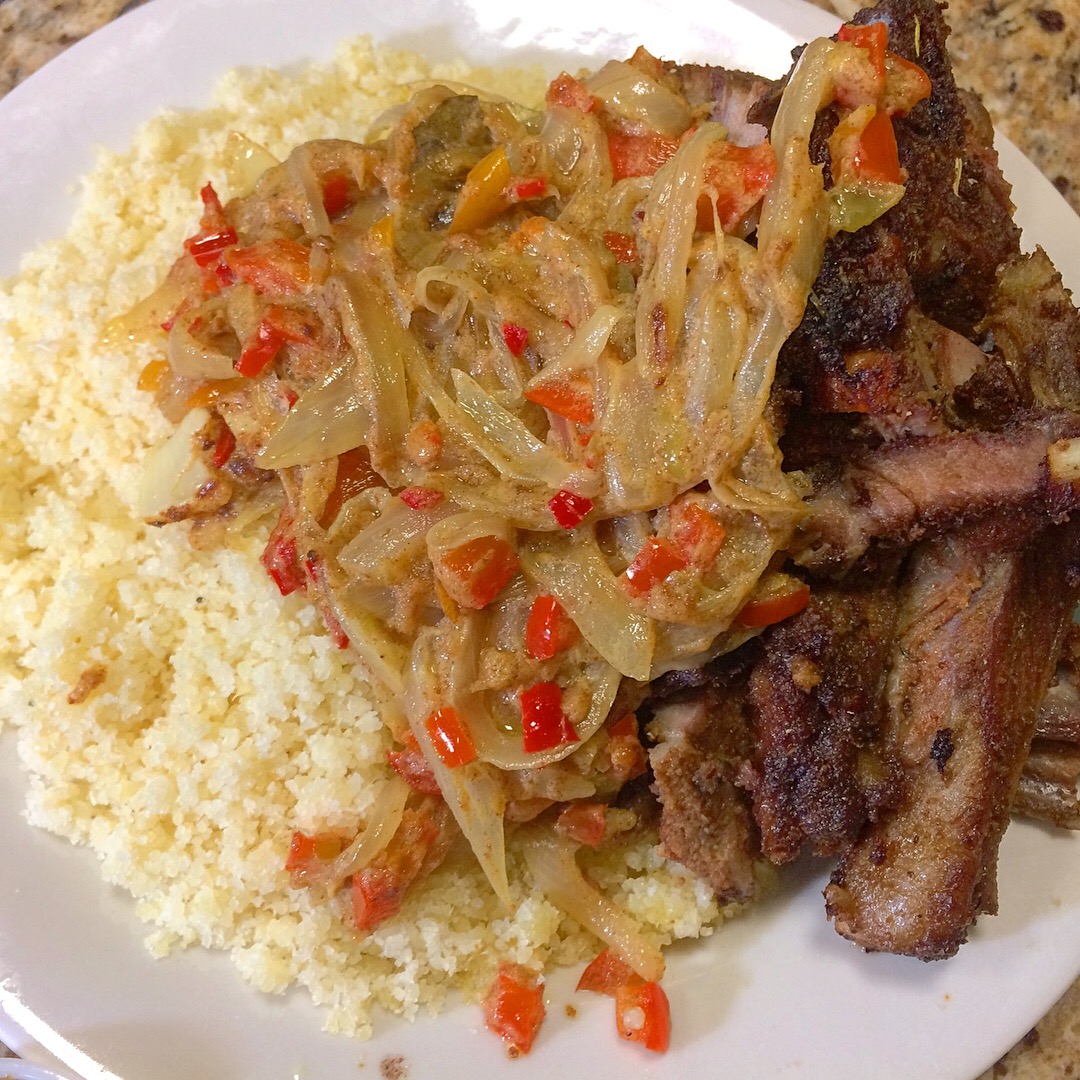 Dibi and Acheke
Dibi and Acheke
Served with remarkable mustard onions. Dibi is roasted meat, in this case lamb, sliced into chunks, and often part of the street food scene; the mustard component is a significant ingredient in the recipe. Acheke (you might see it as attiéké) is grated cassava with a texture similar to couscous.
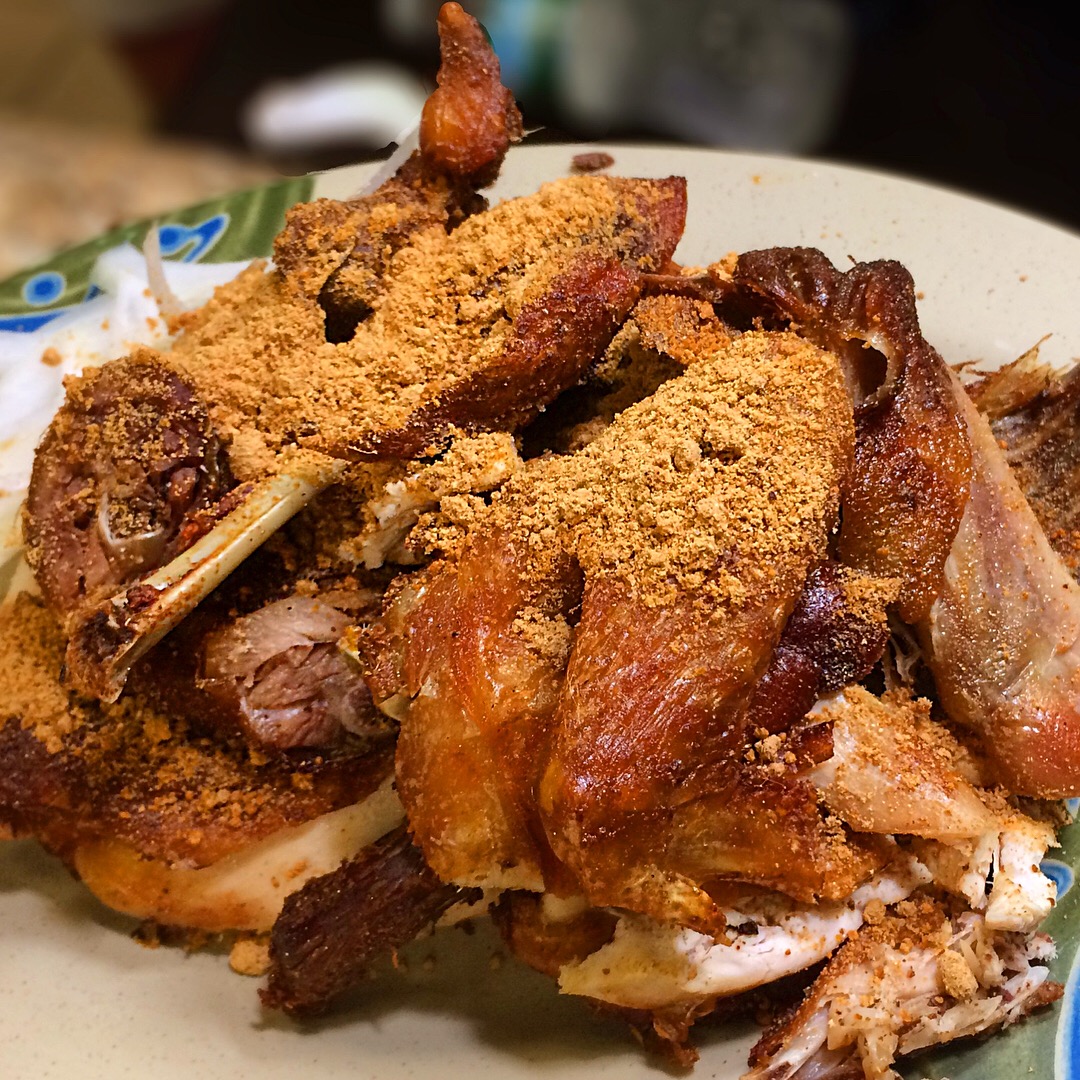 Guinea Fowl (Akonfem)
Guinea Fowl (Akonfem)
The meat is a little leaner than chicken and the flavor is more pronounced. It was topped with peanut powder, traditionally a blend of peanuts and chili powder along with spices like ginger, nutmeg, cloves, and cinnamon.
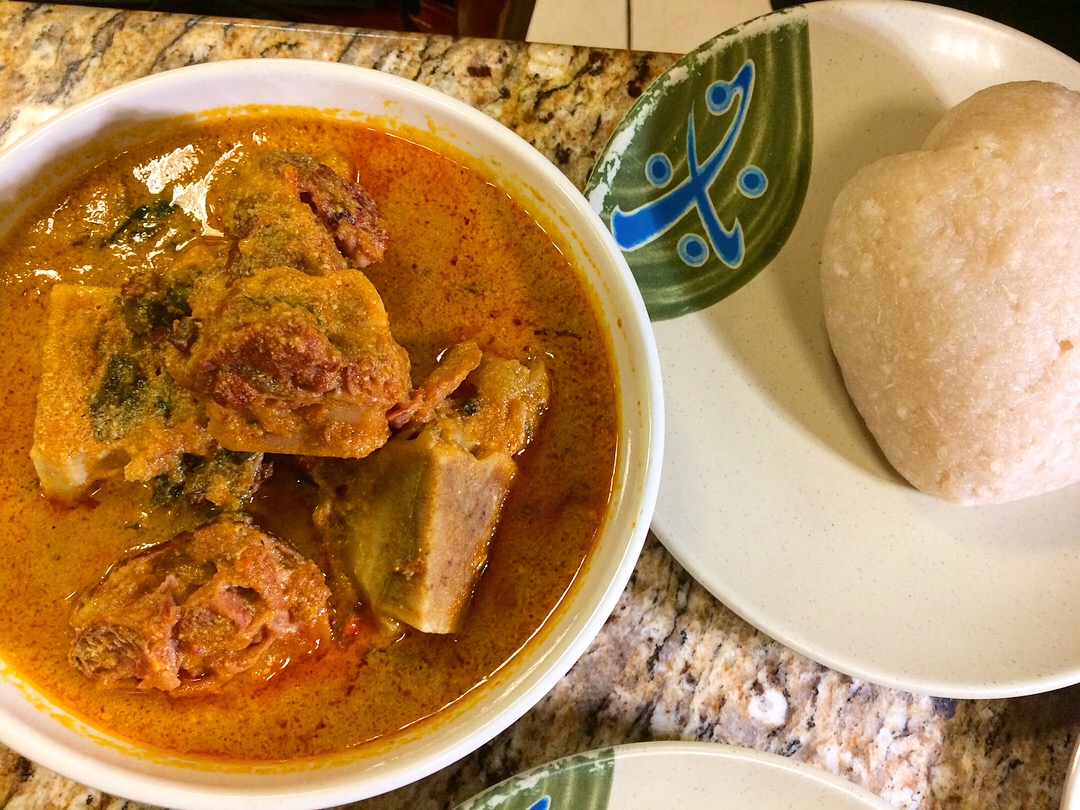 Eba with Egushi
Eba with Egushi
So many fufus, so little time, and I admit to liking them all. In contrast to smooth, pounded cassava fufu, firmer eba has tiny flecks of gari (dried grated cassava) in it and is a little tart or sour tasting. Perfect with egushi (you might see egusi), a delicious soup made from ground melon/pumpkin/squash/gourd seeds.
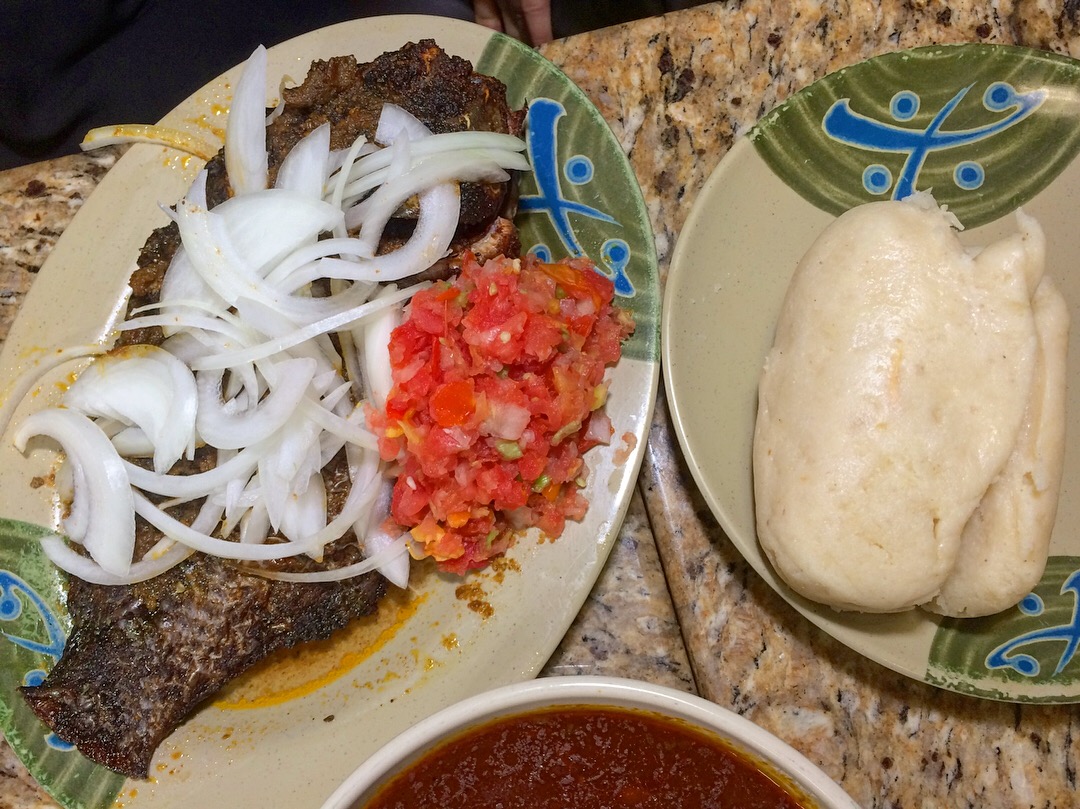 Banku with Baked Tilapia
Banku with Baked Tilapia
Banku is fermented corn or corn + cassava dough, a little sticky, and is a typical partner for baked tilapia and other fish dishes.
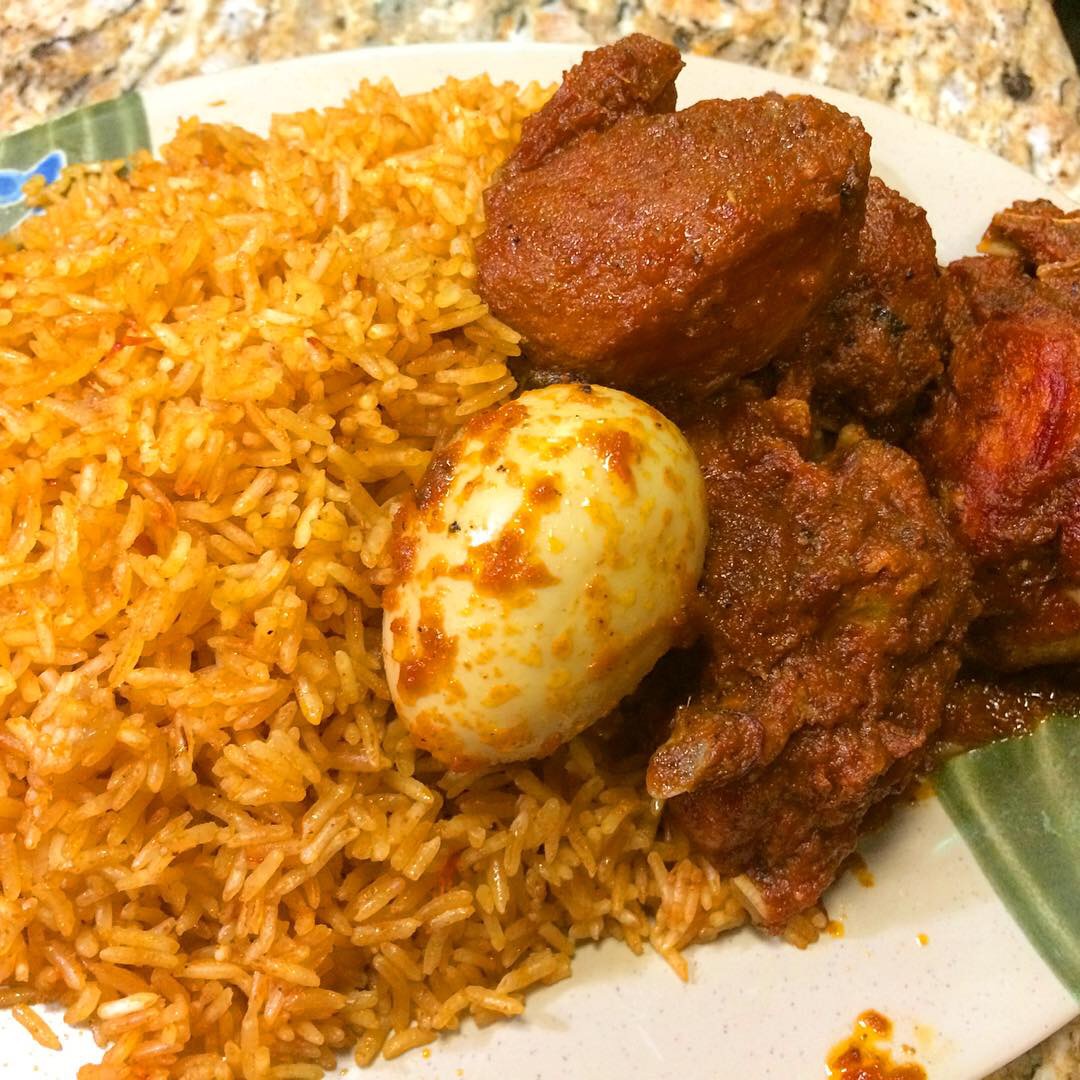 Jollof Rice with Chicken
Jollof Rice with Chicken
Accra’s jollof rice, the widely celebrated and beloved tomato-based West African triumph and a source of both pride and dispute among African nations as to whose version is best, was delicious as was the chicken.
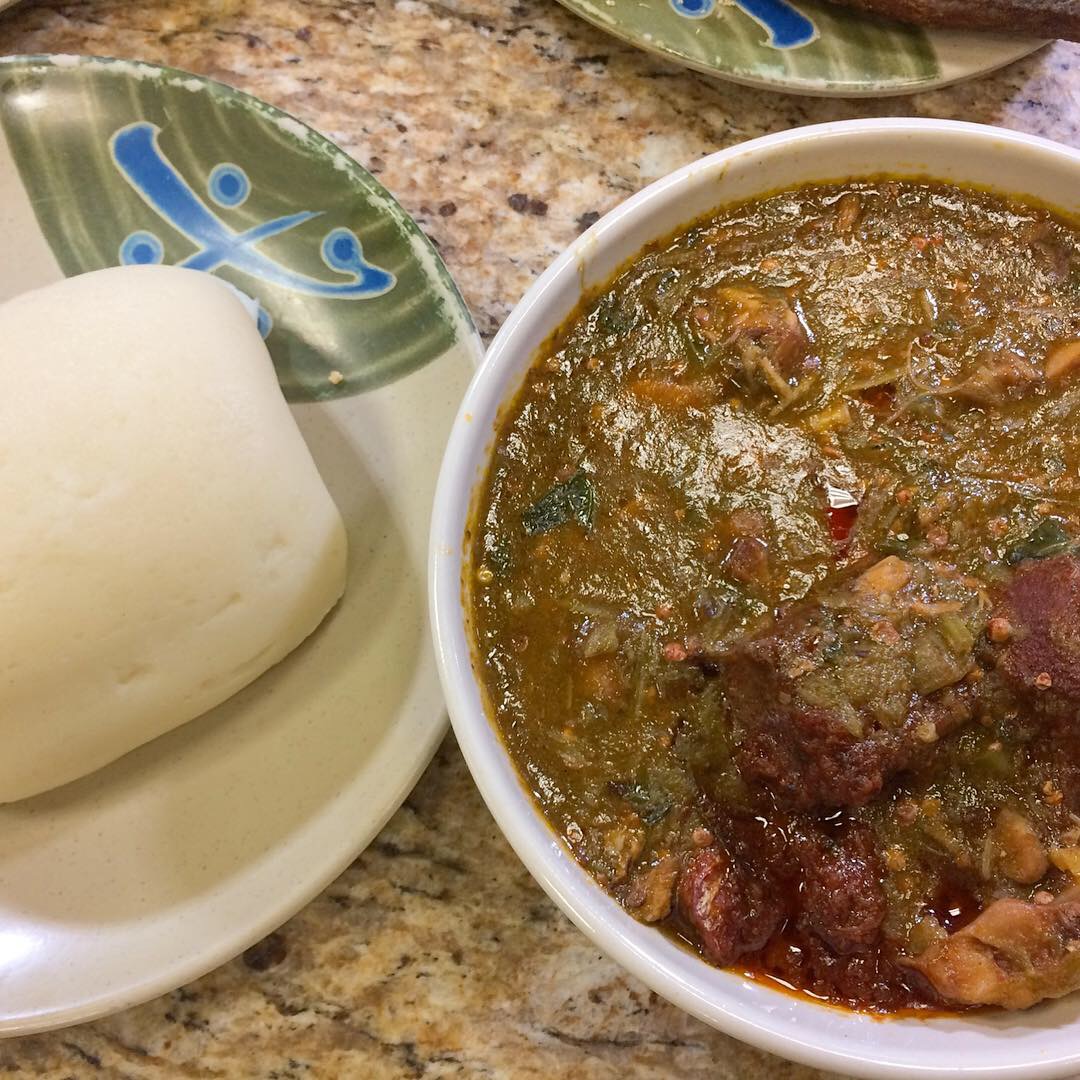 Pounded Yam Fufu and Okra
Pounded Yam Fufu and Okra
This time, the fufu is yam rather than cassava; different but equally tasty. The okra soup is delicious although mucilaginous – an acquired taste, or perhaps an acquired texture. Generally my advice to those who are new to okra soup is to try to think past the consistency and just focus on the wonderful flavor!
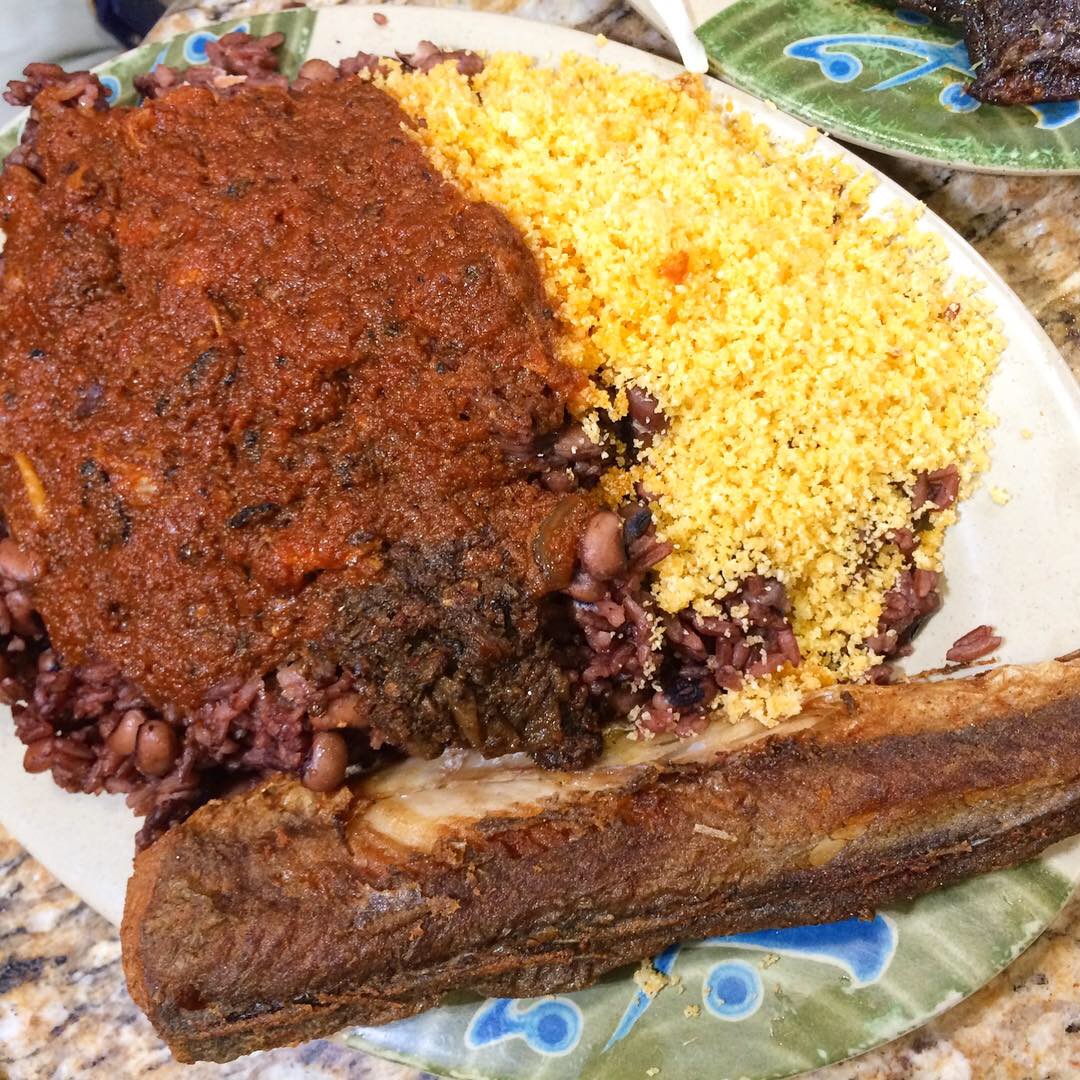 Wakey with Fried Whiting and Gari
Wakey with Fried Whiting and Gari
Wakey (you might see waakye and other spellings but the pronunciation is wah-chay – rhymes with watch-way) is Ghana’s culinary claim to fame; similar to West Indian rice and peas, it’s made with rice and black eyed peas or cowpeas. The characteristic reddish-purplish-brown color can come from dried red sorghum leaves, millet leaves, or even baking soda. Gari is dried, ground cassava, a little like Brazilian manioc, but unique. And tasty fried whiting – what’s not to like?!
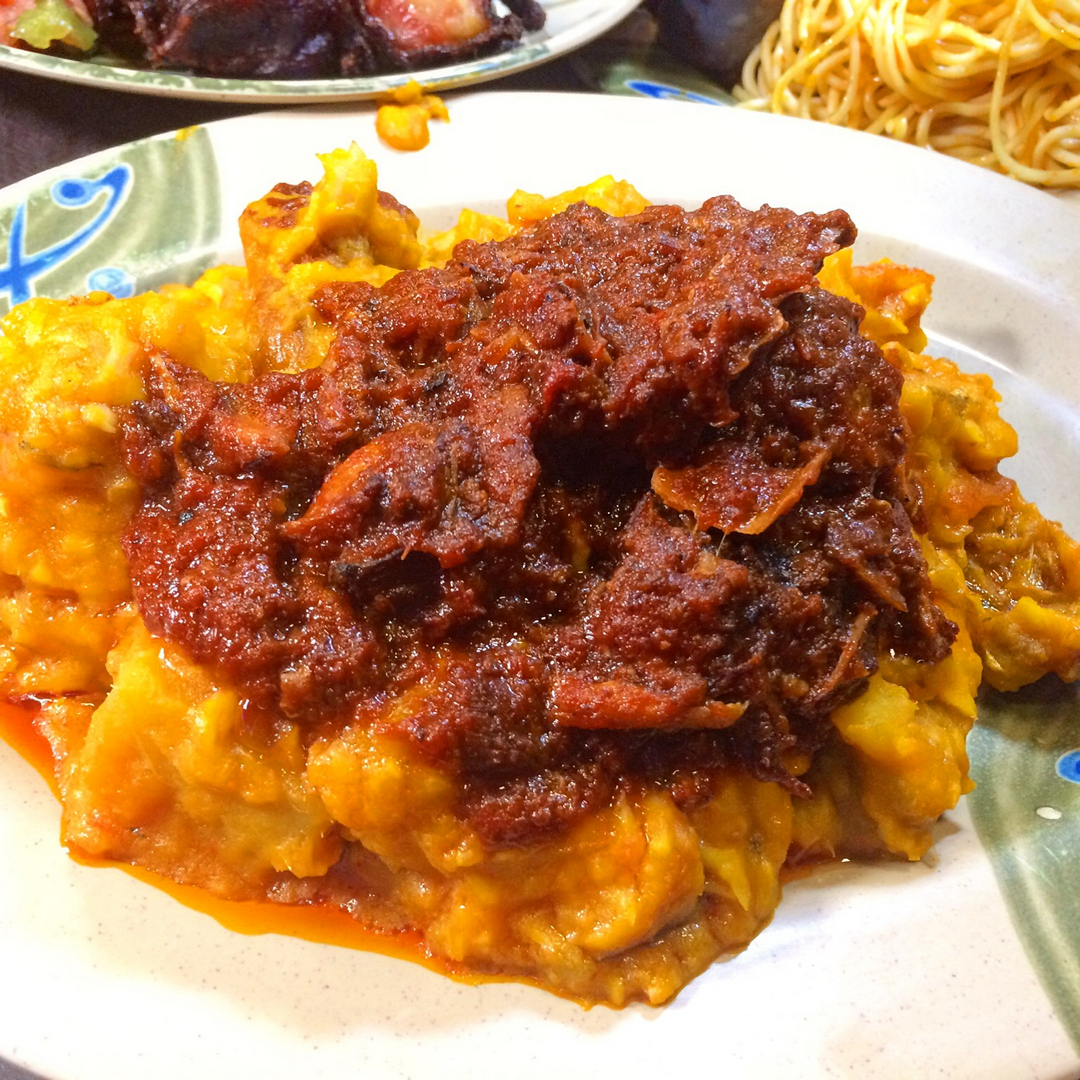 Yam Porridge
Yam Porridge
The last time we went, Ayesha, the owner, told me that this dish was new on the menu and recommended that we try it. I am so glad we did!
Yam Porridge (aka asaro) is not what some customarily think of as porridge, and those are not the kind of yams some think of as Thanksgiving fare (those are actually sweet potatoes); these yams are seasoned and cooked down so there is a little mashed yam “soup” and some larger tender chunks. Topped with a sauce made from smoked turkey, onion, and tomato in red palm oil, it was another winner. If this isn’t comfort food, I don’t know what is!
And two photos from a subsequent lunchtime visit:
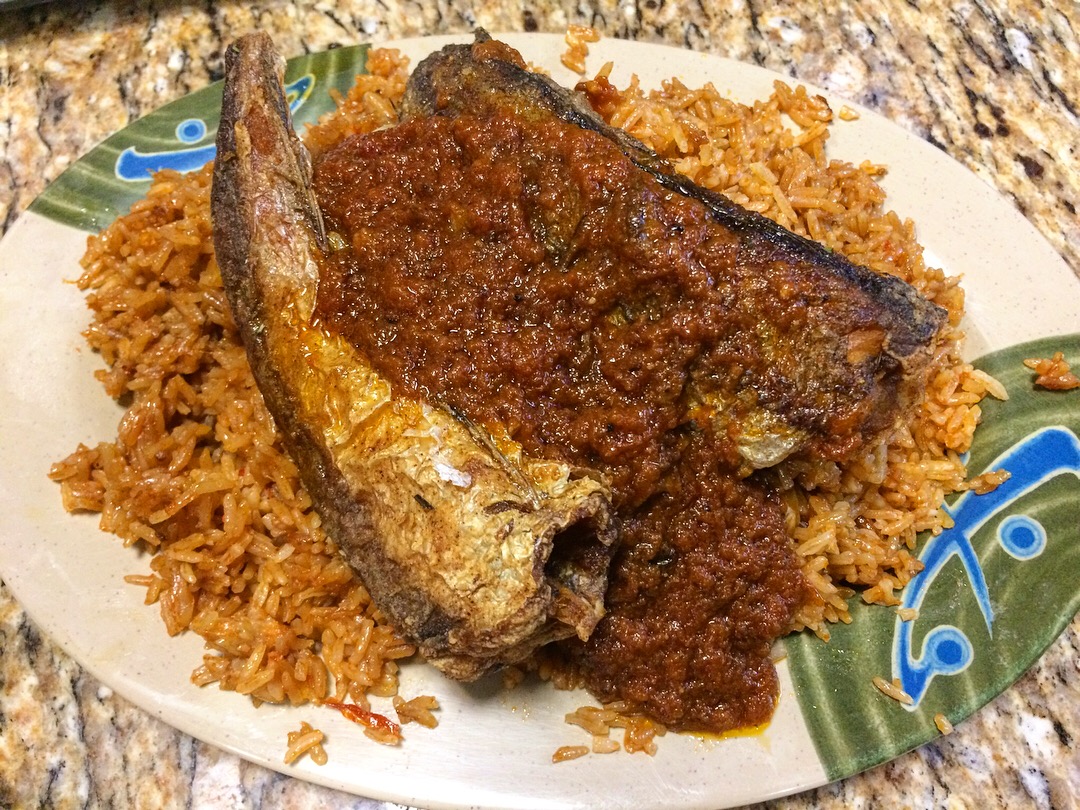 Fried Whiting with Jollof Rice
Fried Whiting with Jollof Rice
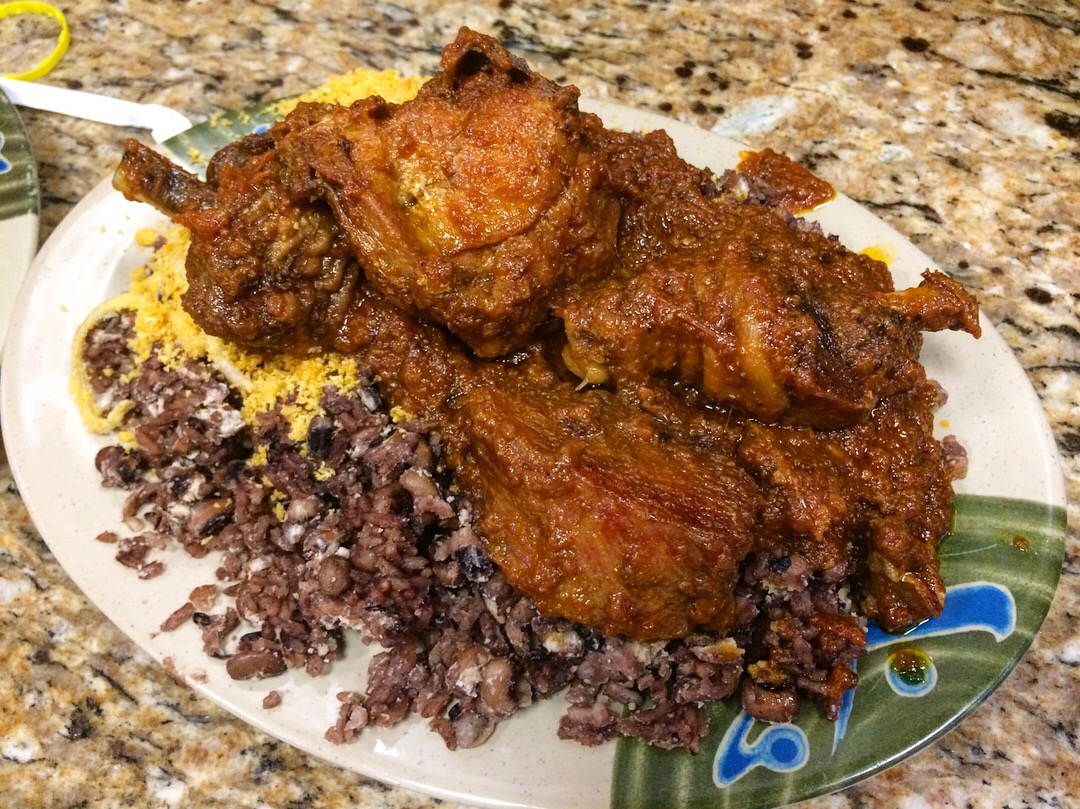 Chicken with Waakye
Chicken with Waakye
PS: Get some of their amazing homemade ginger beer when you go! Non-carbonated, non-alcoholic, unique and delicious.
Accra Restaurant is located at 2065 Adam Clayton Powell Jr Blvd, Manhattan.
